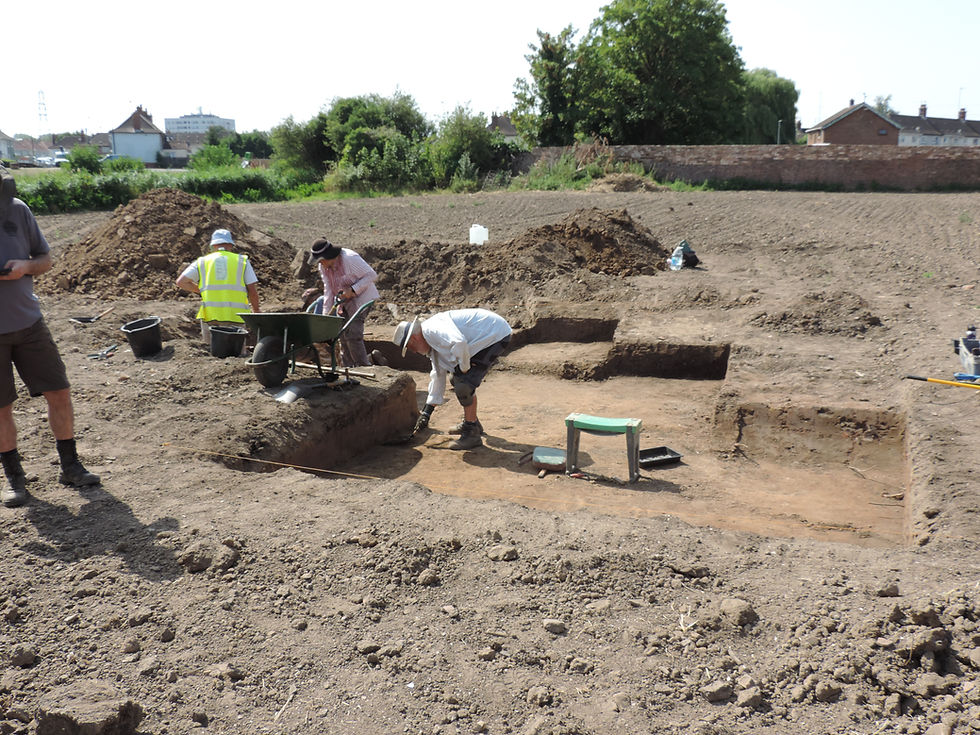King's Lynn Under Siege Project

In the summer of 1643, during the first year of what would become known as the English Civil War, a coup seized control of the Norfolk port of King’s Lynn, turning it into the most important Royalist procession in an otherwise Parliamentarian East Anglia. After a relatively short siege, Parliament retook the town, and then, realising its importance as a logistical centre, refortified King’s Lynn to a level of sophistication seldom found anywhere else in Britain.
Since 2018 King’s Lynn has been the home to a community archaeology project dedicated to studying the role of the town during the Civil Wars, the impact of the siege, and how and why it was refortified. Co-founded by Neil Faulkner and David Flintham, King’s Lynn under Siege (KLuS) has challenged the traditional view that the siege of King’s Lynn was little more than a footnote to the history of the conflict, and instead has demonstrated that the siege should be seen as a turning point of the entire war.
Unlike some other conflict archaeology projects, KLuS has spent a lot of time in local and national archives, and this has unearthed a considerable amount of contemporary material including actual plans of the defences as built, and accounts identifying not only monies spent on the construction of the defences, but naming some of those involved too.
The fortifications themselves were of an earthwork construction, continuing a tradition that can be traced back to Iron Age hillforts. Defences made out of earth were not only cheaper to construct, but they were also better at resisting cannonballs. Current investigations are centred on the site of the north-east bastion (think of this as the equivalent of a tower in a medieval stone wall) to the north of the town. This site has been under investigation since the beginning of 2020, although as a result of the pandemic, the project wasn’t actually able to ‘get out into the field’ until September 2021, when the initial dig was filmed as part of Channel 4’s Great British Dig series.

The September 2021 dig included a main trench of some 30m in length and revealed cuts that matched those set out on a contemporary plan of the fortifications almost exactly. Another find was a wooden stake and supporting wooden cross-piece that suggested how the earthen rampart might have been constructed.
Following a full geophysical survey in March 2022, the 2022 season, which took place in the searing temperatures of July’s heatwave, uncovered a further stake. Only rarely do contemporary accounts indicate how earthwork fortifications were actually constructed; but the interpretation of the stakes suggest that construction was by a series of stepped layers of hammered clay, each level supported by a series of vertical stakes and horizontal planks or tightly bound brushwood.


Other finds from the July 2022 dig connect the site with King’s Lynn’s role as a wine importer during the Seventeenth and Eighteenth centuries. Towards the rear of the site there was evidence for the site’s role in brickmaking in the Eighteenth and early Nineteenth centuries, and this is something that the project is keen to explore further.

In July 2023, augering, test-pitting, and further fieldwalking was undertaken, which has helped inform the project’s future plans. Objectives for 2024 include uncovering further traces of the earth-work defences, and to investigate the site of a brick-kiln recorded on an Eighteenth-century map.

In addition to its fieldwork and other research, the project has become an important educator, and since 2022 KLuS has presented its findings to around a dozen local and national societies and forums, including a local school and at the first ever national conference dedicated to the study of English Civil War fortress warfare.

The project will be return to site between 14th and 19th July 2024. We are currently open to bookings for this season so if you are interested in joining us this year, visit our page on the SHARP website.
To find out more about the KLuS project, visit https://www.vauban.co.uk/kings-lynn-under-siege.



















Comments